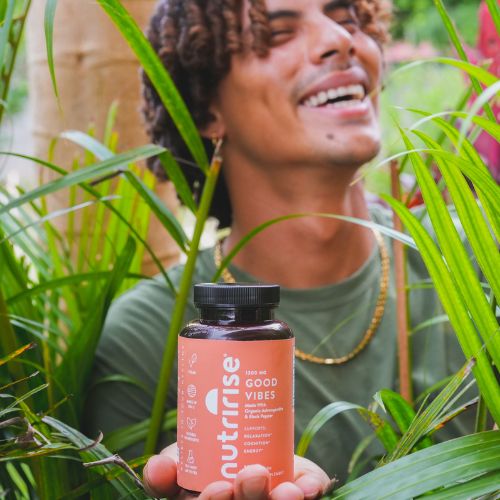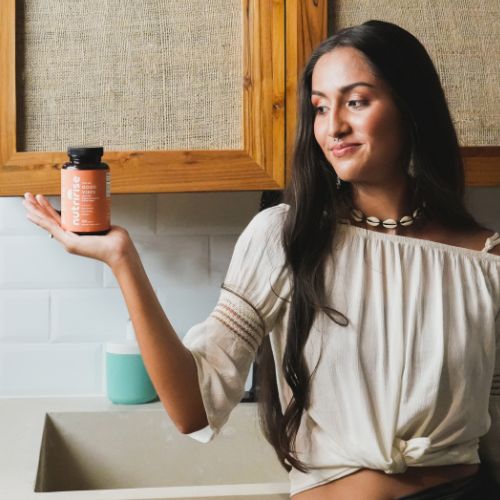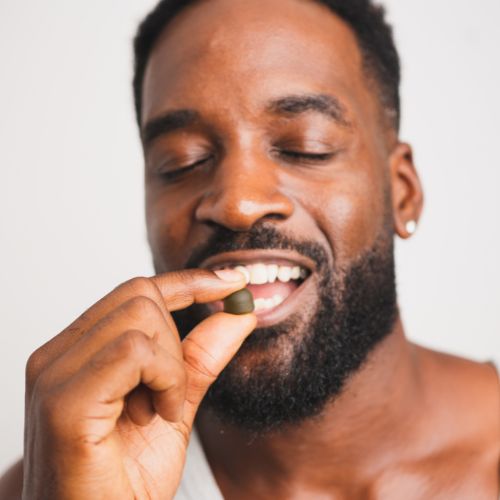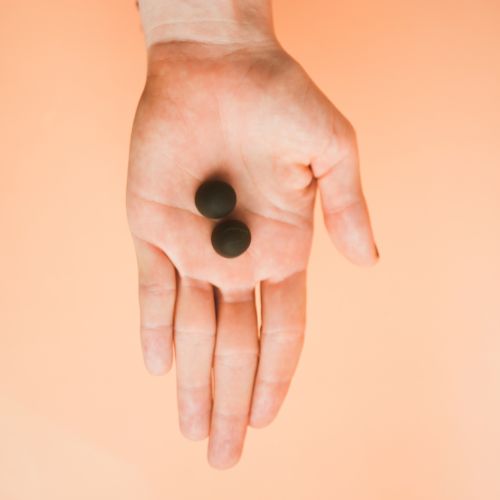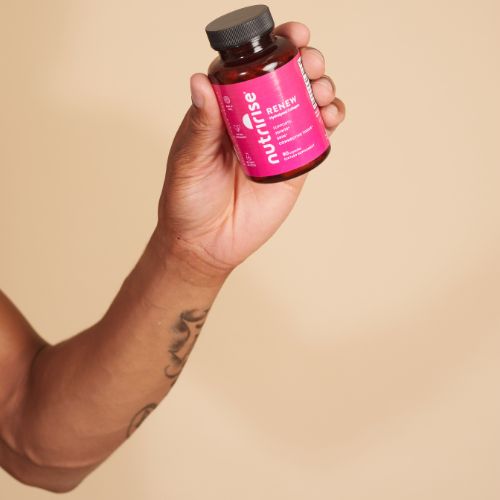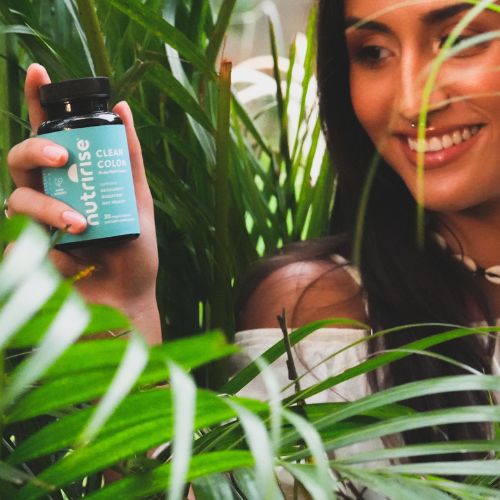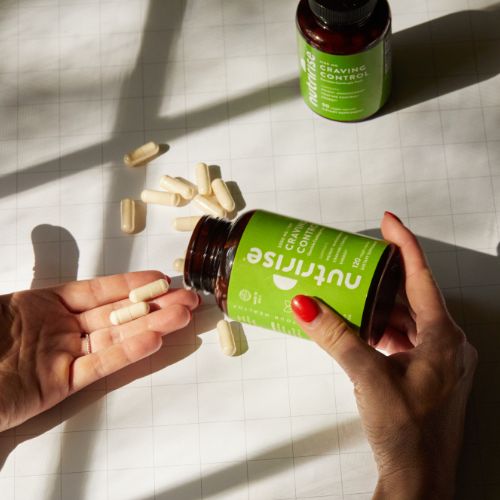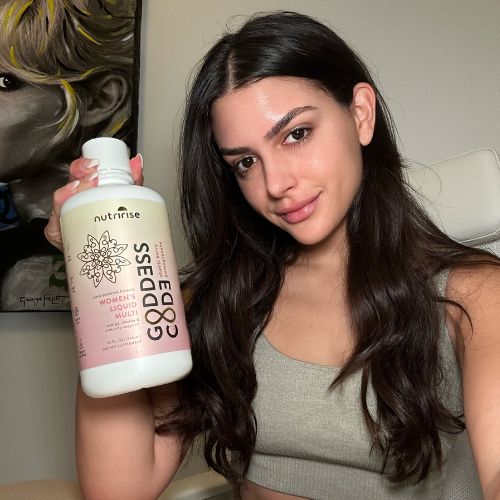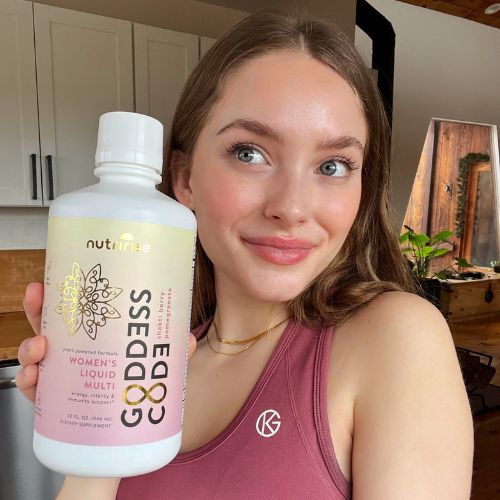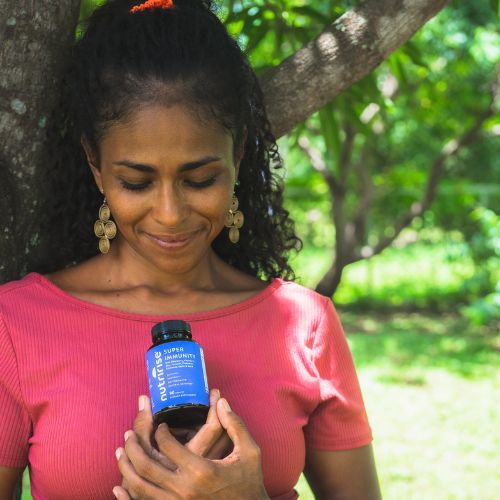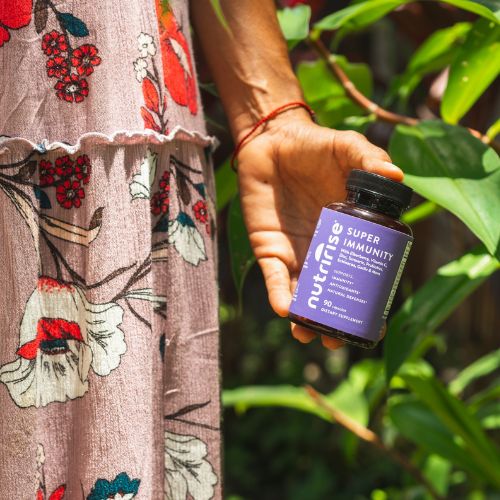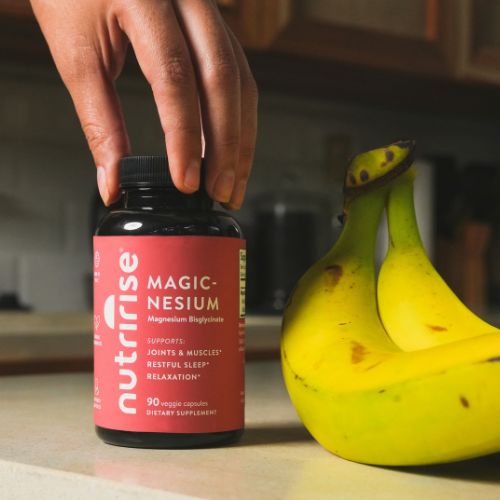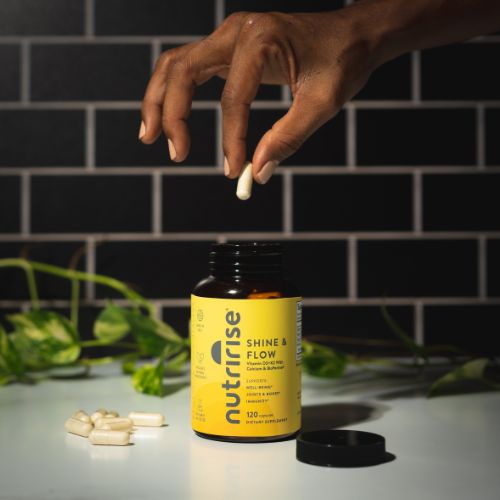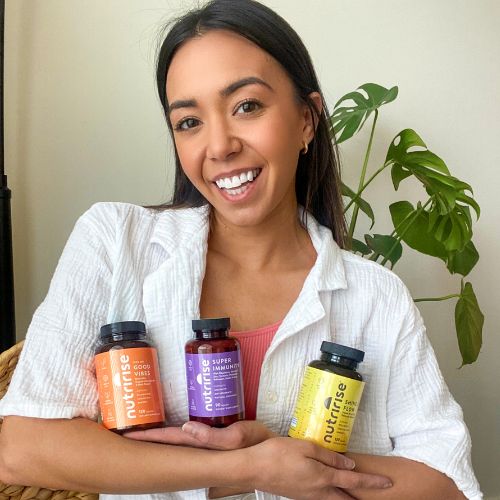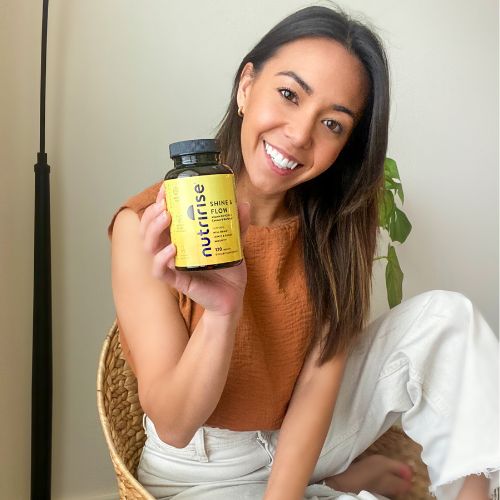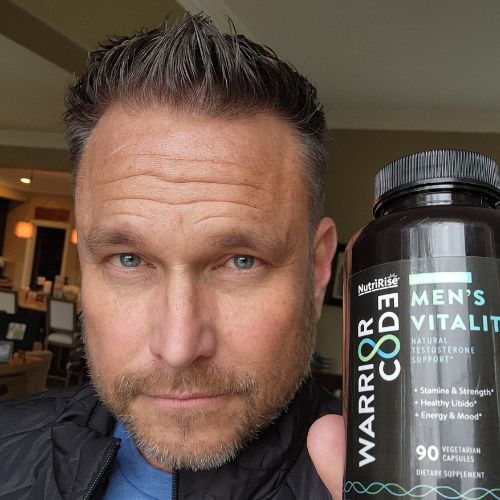• The Science Behind Herbal Synergy
Botanical synergy occurs when two or more plant compounds work together to produce effects greater than the sum of their individual parts. This phenomenon, known scientifically as pharmacological synergism, has been observed throughout traditional medicine systems for thousands of years.
Research published in the Journal of Ethnopharmacology demonstrates that synergistic herbal combinations can enhance therapeutic outcomes through multiple mechanisms: improved absorption, reduced metabolism of active compounds, complementary biological pathways, and enhanced cellular uptake.
Understanding these interactions enables wellness professionals to create more effective protocols for their clients while potentially reducing the quantities of individual compounds needed to achieve desired outcomes.
• Turmeric and Black Pepper: The Gold Standard Partnership
- The Bioavailability Challenge
Curcumin, turmeric's primary active compound, faces a significant challenge: poor bioavailability. Studies show that curcumin is rapidly metabolized by the liver and eliminated from the body, resulting in low blood plasma levels when taken alone.
- How Black Pepper Changes Everything
Piperine, the alkaloid responsible for black pepper's pungency, acts as a powerful bioenhancer. Research published in Planta Medica found that piperine increases curcumin bioavailability by an astounding 2000% when taken together.
The mechanism involves piperine's ability to inhibit hepatic and intestinal glucuronidation, effectively slowing curcumin's metabolism and allowing more of the compound to remain active in the bloodstream for extended periods.
- Clinical Evidence and Case Studies
A randomized controlled trial involving 60 participants with osteoarthritis compared curcumin alone versus curcumin with piperine over 12 weeks. The combination group showed 40% greater improvements in pain reduction and joint mobility compared to curcumin alone.
Another study focusing on inflammatory markers found that the turmeric-black pepper combination reduced C-reactive protein levels by 58% compared to 23% with turmeric alone, demonstrating superior anti-inflammatory effects.
- Optimizing Potency and Absorption
To maximize the turmeric-black pepper synergy:
-
Use a ratio of 100:1 (turmeric to black pepper) for optimal enhancement
-
Take with a fat-containing meal to further improve absorption
-
Consider time-release formulations to maintain steady blood levels
-
Ensure black pepper extract contains minimum 95% piperine
• Turmeric and Ginger: Amplifying Anti-Inflammatory Power
- Complementary Mechanisms of Action
While turmeric primarily works through COX-2 inhibition, ginger targets multiple inflammatory pathways including 5-lipoxygenase and nuclear factor-kappa B (NF-κB). This multi-target approach creates a comprehensive anti-inflammatory effect.
- Research Findings
A comparative study published in the International Journal of Rheumatic Diseases examined the effects of turmeric alone, ginger alone, and the combination in patients with knee osteoarthritis. After 12 weeks, the combination group experienced:
-
65% reduction in pain scores (vs. 42% turmeric alone, 38% ginger alone)
-
58% improvement in joint stiffness (vs. 35% and 31% respectively)
-
47% enhancement in physical function (vs. 28% and 25% respectively)
- Digestive Benefits
Both turmeric and ginger support digestive health, which is crucial for nutrient absorption. A clinical trial demonstrated that this combination improved gastric emptying by 32% and reduced digestive discomfort in 78% of participants, creating optimal conditions for nutrient utilization.
- Case Study: Professional Athletes
A six-month study with professional soccer players used a turmeric-ginger combination to address exercise-induced inflammation and joint stress. Results showed:
-
43% reduction in post-exercise inflammatory markers
-
35% decrease in recovery time between training sessions
-
67% reduction in joint-related complaints
-
No adverse effects reported
- Maximizing Therapeutic Benefits
For optimal turmeric-ginger synergy:
-
Use fresh ginger when possible, as it contains higher levels of active gingerols
-
Combine standardized extracts containing 95% curcuminoids and 5% gingerols
-
Take on an empty stomach for faster absorption, or with meals if digestive sensitivity occurs
-
Consider cycling protocols (3 weeks on, 1 week off) for sustained effectiveness
• Turmeric and Boswellia: Targeting Joint Health
- Dual-Action Inflammation Control
Boswellia serrata contains boswellic acids that specifically inhibit 5-lipoxygenase, complementing turmeric's COX-2 inhibition. This dual approach addresses both major inflammatory pathways simultaneously.
- Clinical Research
A landmark study published in the International Journal of Medical Sciences compared the turmeric-boswellia combination against individual compounds in 60 participants with rheumatoid arthritis over 90 days:
Pain Reduction:
-
Combination: 71% improvement
-
Turmeric alone: 48% improvement
-
Boswellia alone: 52% improvement
Joint Swelling:
-
Combination: 63% reduction
-
Turmeric alone: 35% reduction
-
Boswellia alone: 41% reduction
Morning Stiffness:
-
Combination: 69% improvement
-
Turmeric alone: 38% improvement
-
Boswellia alone: 44% improvement
- Cartilage Protection
Research indicates that the turmeric-boswellia combination provides superior cartilage-protective effects. A 12-month study using MRI imaging showed that participants taking the combination maintained 89% of baseline cartilage thickness, compared to 76% with turmeric alone and 81% with boswellia alone.
- Case Study: Post-Surgical Recovery
A clinical observation involving 45 patients recovering from knee arthroscopy examined the turmeric-boswellia combination's effects on healing and inflammation:
-
52% faster return to normal joint range of motion
-
38% reduction in post-operative swelling
-
45% decrease in pain medication requirements
-
29% shorter overall recovery time
- Optimizing Joint Health Benefits
To maximize turmeric-boswellia effectiveness:
-
Use standardized boswellia extract containing minimum 65% boswellic acids
-
Combine with 95% curcuminoids extract for consistent potency
-
Take consistently for minimum 8-12 weeks to observe full benefits
-
Consider enteric-coated formulations to protect against stomach acid degradation
• Comprehensive Bioavailability Strategies
- Understanding Absorption Barriers
Several factors limit herbal compound absorption:
-
Poor water solubility (particularly curcumin)
-
Rapid hepatic metabolism
-
Large molecular size preventing cellular uptake
-
Degradation by stomach acid
-
Competition with other nutrients for absorption pathways
- Advanced Delivery Systems
Modern extraction and formulation technologies have developed several approaches to enhance bioavailability:
Phytosome Technology: Combines active compounds with phospholipids, increasing absorption by up to 29-fold compared to standard extracts.
Liposomal Encapsulation: Protects compounds during digestion and facilitates cellular uptake, improving bioavailability by 8-10 times.
Nanoparticle Formulations: Reduce particle size to enhance dissolution and absorption, particularly effective for poorly water-soluble compounds.
- Timing and Combination Strategies
Research supports specific timing protocols for maximum effectiveness:
-
Take fat-soluble compounds (curcumin) with healthy fats
-
Space doses throughout the day for sustained blood levels
-
Consider taking with quercetin, another natural bioenhancer
-
Avoid taking with high-calcium foods, which can interfere with absorption
• Creating Effective Protocols for Clients
- Assessment and Individualization
Before recommending synergistic herb combinations, consider:
-
Individual inflammatory markers and health status
-
Current medications and potential interactions
-
Digestive health and absorption capacity
-
Specific therapeutic goals and timeline expectations
-
Lifestyle factors that may influence compliance
- Dosage Guidelines
Based on clinical research, effective daily dosages typically include:
Turmeric-Black Pepper:
Turmeric-Ginger:
Turmeric-Boswellia:
– Safety Considerations
While generally well-tolerated, consider these precautions:
-
Monitor clients taking blood-thinning medications
-
Start with lower doses to assess individual tolerance
-
Be aware of potential gallbladder stimulation with turmeric
-
Consider cycling protocols for long-term use
• Quality and Sourcing Standards
- Selecting Superior Ingredients
Not all herbal extracts are created equal. Look for:
-
Third-party testing for purity and potency
-
Standardized extract concentrations
-
Organic certification when available
-
Proper storage and handling procedures
-
Transparent sourcing and manufacturing practices
- Avoiding Common Pitfalls
Many wellness entrepreneurs unknowingly compromise results by:
-
Choosing low-quality, unstandardized extracts
-
Ignoring bioavailability enhancement strategies
-
Failing to consider individual client variations
-
Not allowing sufficient time for therapeutic effects to develop
• Taking Action: Your Next Steps
The science is clear: synergistic herb combinations offer superior therapeutic benefits compared to individual compounds. For wellness entrepreneurs committed to providing the most effective natural solutions for bone and joint health, incorporating these evidence-based combinations represents a significant opportunity to enhance client outcomes.
Ready to experience the power of synergistic herbs for yourself and your clients? Consider starting with NutriRise Turmeric With Ginger, which combines two of the most researched anti-inflammatory botanicals in optimal ratios for maximum effectiveness. For comprehensive joint support, NutriRise Joint Restore+ incorporates multiple synergistic compounds including turmeric, boswellia, and other scientifically-validated ingredients.
The future of natural wellness lies in understanding and harnessing these powerful botanical partnerships. By implementing synergistic herb protocols in your practice, you're not just following ancient wisdom—you're applying cutting-edge science to help your clients achieve their optimal health potential.



– written by Ramsha Mirza





